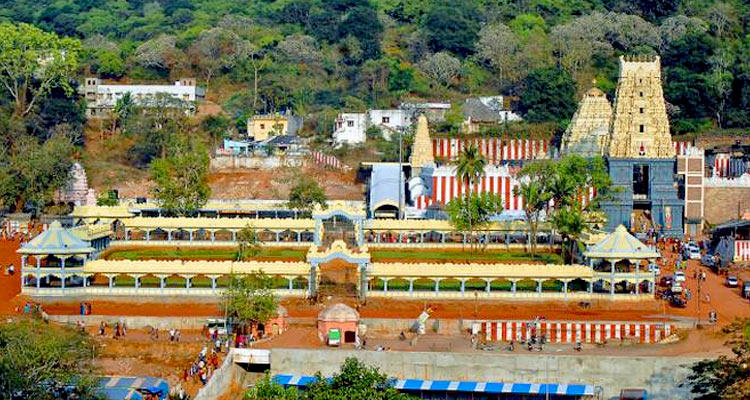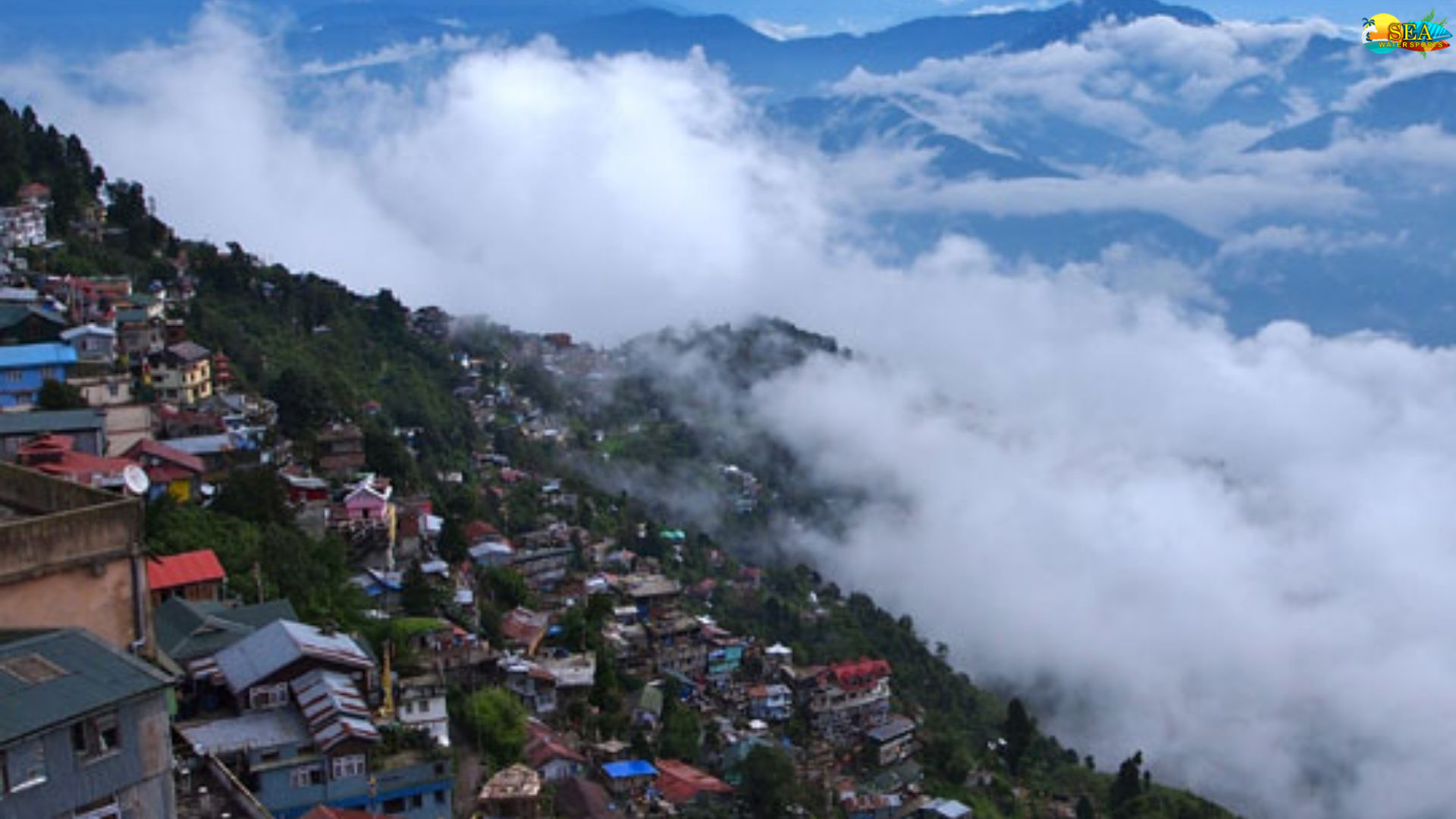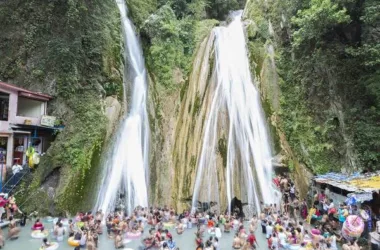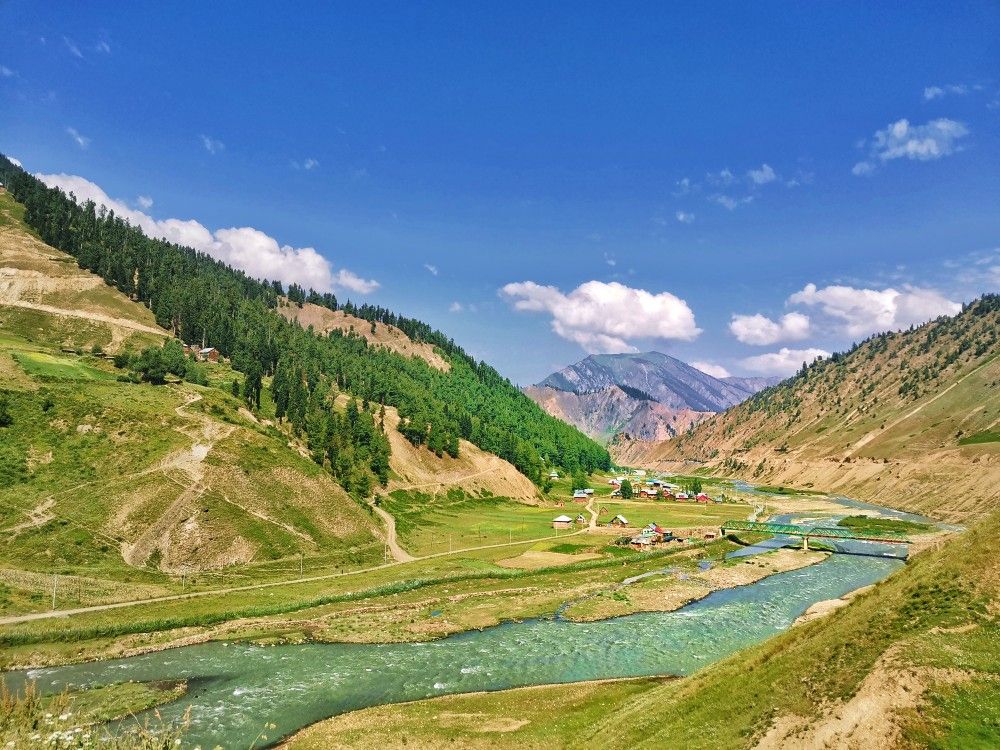Simhachalam Temple, located in the city of Visakhapatnam in the Indian state of Andhra Pradesh, is a highly revered temple dedicated to Lord Vishnu in his Narasimha avatar (half-man and half-lion). The temple, which is situated on Simhachalam hill, is known for its unique architectural style and rich history.
The temple is believed to have been built by the Eastern Ganga Dynasty in the 12th century AD. The temple architecture is a mix of the Dravidian and Kalinga styles, with the main temple complex consisting of a garbhagriha (sanctum sanctorum) and a pillared hall. The temple’s main attraction is the statue of Lord Narasimha, which is covered with sandalwood paste for most of the year and is only revealed for a short period of 12 hours annually, on the day of the “Chandanotsavam” festival.
Simhachalam Temple is also known for its rich cultural and historical significance. The temple has been mentioned in the ancient texts of the Skanda Purana and Varaha Purana and is believed to be one of the 108 Divyadesams (sacred abodes) of Lord Vishnu. The temple has also been visited by many famous saints and poets, including Sri Ramanuja and Sri Vedanta Desika.
The temple also has a beautiful garden, which is a major attraction for visitors. The garden, which is located at the base of the hill, is known for its lush greenery and peaceful ambiance. Visitors can take a leisurely stroll through the garden, and enjoy the natural beauty of the surroundings.
The temple is also a major pilgrimage center and attracts thousands of devotees from all over the country. The temple offers various facilities for the convenience of the devotees, including accommodation, dining, and transportation. The temple also conducts various spiritual and cultural programs throughout the year.
In conclusion, Simhachalam Temple in Visakhapatnam is a must-visit destination for anyone interested in history, culture, and spirituality. The temple’s unique architecture, rich history, and peaceful ambiance make it a perfect place to explore and reflect.
Significance of Simhachalam Temple
Simhachalam Temple is considered to be one of the most important pilgrimage sites in the state of Andhra Pradesh. It is dedicated to Lord Vishnu in his Narasimha avatar (half-man and half-lion), and is one of the 108 Divyadesams (sacred abodes) of Lord Vishnu as per the Vaishnavite tradition.
The temple is believed to be built by the Eastern Ganga Dynasty in the 12th century AD. The temple’s main attraction is the statue of Lord Narasimha, which is covered with sandalwood paste for most of the year and is only revealed for a short period of 12 hours annually, on the day of the “Chandanotsavam” festival. This festival attracts thousands of devotees from all over the country.
The temple has a rich historical and cultural significance. It has been mentioned in the ancient texts of the Skanda Purana and Varaha Purana and has been visited by many famous saints and poets, including Sri Ramanuja and Sri Vedanta Desika.
The temple also has a beautiful garden, which is a major attraction for visitors. The garden, which is located at the base of the hill, is known for its lush greenery and peaceful ambiance. Visitors can take a leisurely stroll through the garden, and enjoy the natural beauty of the surroundings.
Simhachalam Temple is also a major pilgrimage center and attracts thousands of devotees from all over the country. The temple offers various facilities for the convenience of the devotees, including accommodation, dining, and transportation. The temple also conducts various spiritual and cultural programs throughout the year.
In addition to its religious and spiritual significance, Simhachalam Temple is also an important architectural and cultural heritage site and is a testament to the rich history and culture of the region.
History of Simhachalam Temple
The history of Simhachalam Temple, located in Visakhapatnam, Andhra Pradesh, dates back to the 12th century AD. The temple is believed to have been built by the Eastern Ganga Dynasty, who ruled over the region during that time. The temple is dedicated to Lord Vishnu in his Narasimha avatar (half-man and half-lion).
Simhachalam Temple is one of the 108 Divyadesams (sacred abodes) of Lord Vishnu as per the Vaishnavite tradition. The temple has been mentioned in the ancient texts of the Skanda Purana and Varaha Purana, which suggests that the temple has been in existence for thousands of years. The temple is believed to have been built on the site of an ancient shrine that was dedicated to Lord Narasimha.
Throughout the centuries, the temple has been visited by many famous saints and poets, including Sri Ramanuja and Sri Vedanta Desika. These saints have written hymns and prayers in praise of Lord Narasimha, which are still recited by devotees visiting the temple today.
In the late 19th century, the temple underwent extensive renovation and restoration work under the patronage of the local ruler, Sri Raja Sri Venkata Krishna Raju Garu. The temple’s main attraction, the statue of Lord Narasimha, was also renovated during this time.
Today, Simhachalam Temple is a major pilgrimage center and attracts thousands of devotees from all over the country. The temple offers various facilities for the convenience of the devotees, including accommodation, dining, and transportation. The temple also conducts various spiritual and cultural programs throughout the year.
In conclusion, the history of Simhachalam Temple is an interesting blend of mythology, religion, and culture, which has been shaped by the contributions of many generations of devotees, kings, and saints over the centuries.
Simhachalam Temple Timings
The Simhachalam Temple in Visakhapatnam, Andhra Pradesh, is generally open for devotees from early morning to evening. The exact timings may vary depending on the day and the season. But typically the temple opens at 4:00 AM and closes at 9:00 PM.
During the “Chandanotsavam” festival, when the statue of Lord Narasimha is revealed for a short period of 12 hours, the temple remains open for darshan for the entire duration.
It’s important to note that the temple timings may change due to various factors such as festivals, special events, or COVID-19 pandemic restrictions. It’s always advisable to check with the temple authorities or visit the temple’s official website for the most up-to-date information on timings and availability.
Additionally, many devotees prefer to visit the temple during the auspicious time of “Abhishekam” which is performed at 6:00 AM and 12:00 PM.
It’s also worth noting that the temple is closed for a few days a year for maintenance purposes. During that time the temple will not be accessible for darshan.
Best time to visit Simhachalam Temple
The best time to visit the Simhachalam Temple is during the annual Ratha Yatra festival, which typically falls in the month of May or June. This festival is a major event at the temple and attracts thousands of devotees from all over the country. The temple is also open for visitors during other major Hindu festivals such as Janmashtami, Navaratri, and Diwali.
Apart from festivals, the best time to visit the temple is from October to April, as the weather is pleasant and comfortable for sightseeing. The months of May and June are hot and humid, and the monsoon season from July to September can make the roads to the temple slippery and difficult to navigate.
How to reach Simhachalam Temple
There are several ways to reach the Simhachalam Temple:
- By Air: The nearest airport to the temple is Visakhapatnam Airport, which is well-connected to major cities in India. From the airport, you can take a taxi or bus to reach the temple.
- By Train: The nearest railway station to the temple is Visakhapatnam Railway Station, which is well-connected to major cities in India. From the railway station, you can take a taxi or bus to reach the temple.
- By Bus: The temple is well connected by road and there are several state-run and private buses that run from Visakhapatnam to Simhachalam.
- By Car: You can also drive to the temple as it is well connected by road and is located on National Highway 5.
It’s also worth noting that the temple is located on a hilltop, so it requires a steep climb of around 1.5km to reach the temple. Pilgrims can use the steps or take a road route to reach the temple.
Similar Articles
Frequently Asked Questions About Simhachalam Temple
Here are some frequently asked questions about the Simhachalam Temple:
Q. What is the significance of the Simhachalam Temple?
A – The Simhachalam Temple is one of the 18 Narasimha Kshetras in India and is considered to be one of the most important Vaishnavite shrines in the country. It is dedicated to Lord Narasimha, an incarnation of Lord Vishnu.
Q. What is the history of the Simhachalam Temple?
A – The temple is believed to have been built by the Eastern Ganga Dynasty in the 12th century. The temple has undergone several renovations and additions over the centuries.
Q. What is the architecture of the Simhachalam Temple like?
A – The temple has a unique architectural style that combines elements of the Kalinga and Dravidian styles. The temple is known for its richly carved stone and metal sculptures, and the intricate carvings on its walls and pillars.
Q. What is the annual Ratha Yatra festival?
A – The annual Ratha Yatra festival is a major event at the Simhachalam Temple and typically falls in the month of May or June. During the festival, the temple’s main deity, Lord Narasimha, is taken out in a grand procession on a chariot. Thousands of devotees participate in the festival.
Q. Are there any restrictions on visiting the Simhachalam Temple?
A – The temple is open to all visitors, but there are some restrictions on dress codes and photography inside the temple. Visitors are expected to dress modestly and are not allowed to take photographs inside the temple.









